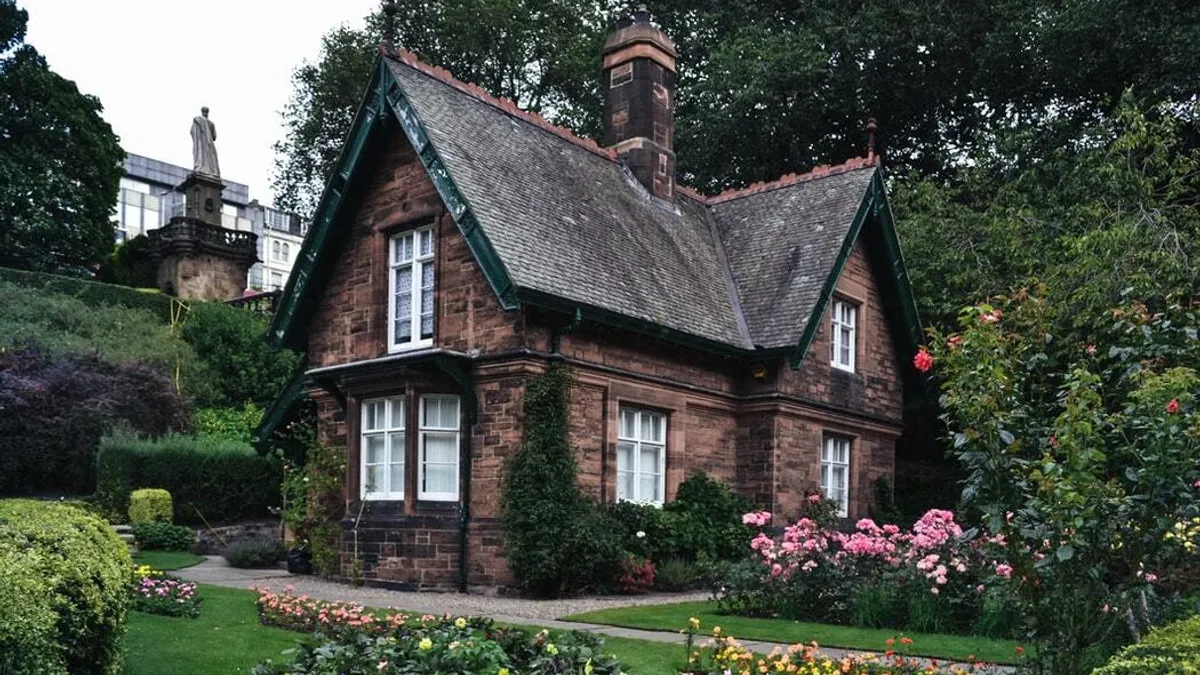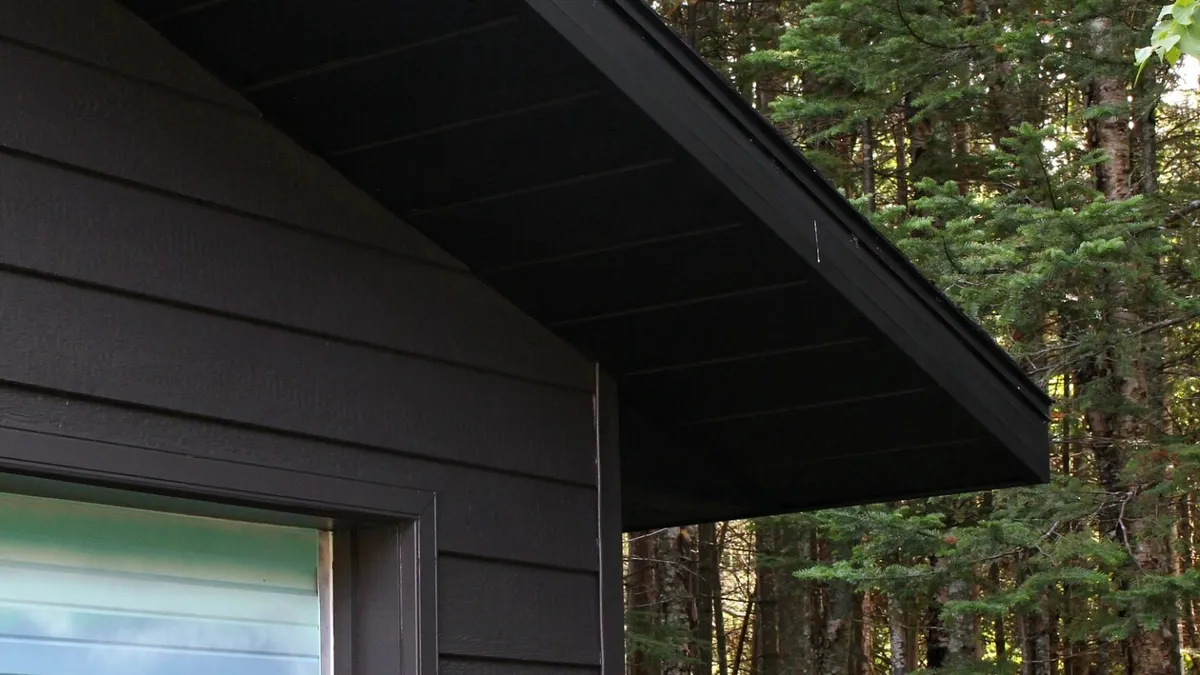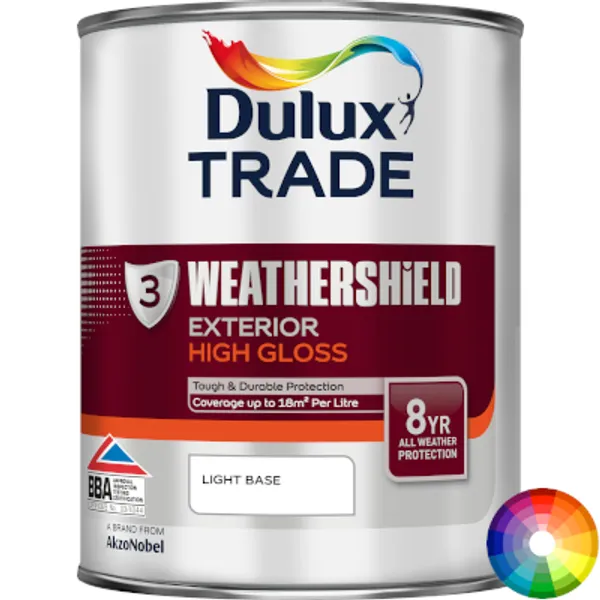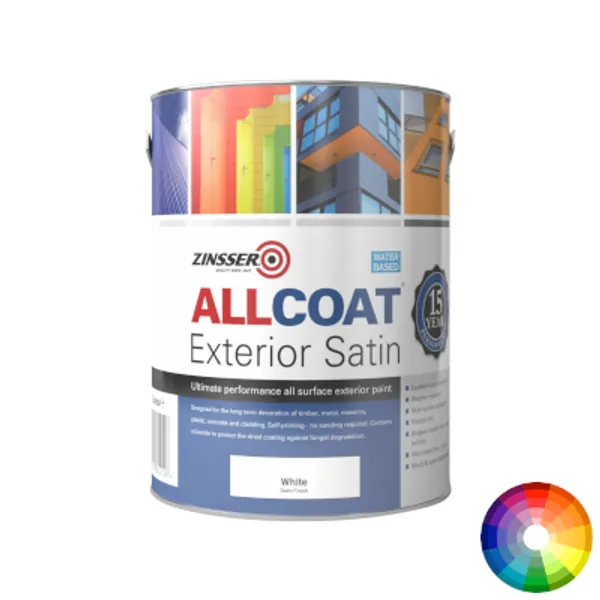Painting Fascias & Soffits - The Expert Guide
Fascias & soffits are amongst some of the often neglected parts of the exterior of houses that can have a huge impact on the kerb appeal of the property. Our team of experts have put together this handy guide to painting these areas to equip you with the knowledge you need to give your home that new lease of life that a fresh lick of paint can provide.

What Are Painting Fascia Boards & Soffits?
The first step is to understand the surface you are painting. So what exactly are fascias & soffits? They are both parts of the exterior trim of a property, along with doors, windows and gutters. The fascia, often known as a fascia board, is a long piece of material, most commonly wooden, that runs underneath the roofline. It helps to provide added protection to the roofline, as well as holding the guttering of the property. The soffit is the part of the board that on the under side of the fascia which you can see when standing underneath. Other parts of this piece of trim include the box end, which is the end piece of the board and finally the bargeboard, which runs on the gable end of the property (the side of the property).
Why Paint Fascia Boards & Soffits?
As with any exterior painting, the addition of a newly painted surface can make all the difference. There are a number of reasons why you may decide to paint your fascias & soffits, including:
- Protecting the surface from the weathering that it has to endure
- Refreshing the look of your home, with modern shades such as Anthracite Grey being extremely popular
- Fading or peeling paint can be a huge eye-sore for your property
By following our advice, you will be able to paint these areas of your property easily and effectively yourself.
The Best Paint For Fascias & Soffits
Now we have established what exactly fascias & soffits are, it is now time to consider what the best paint for these areas is. The likelihood is that the boards will be wood, which narrows down the paints that are suitable to use. The best paint to use will depend on your preference when it comes to paint and what type of timber the fascias and soffits are. Our experts have put together a number of options depending on what best suits your needs.
The Best Paint For Fascias & Soffits
You may have bare, new fascias & soffits or sections of the boards that have not previously been painted after replacing them. This will require a different paint system to previously painted timber surfaces due to a number of factors. Our experts would highly recommend using Dulux Trade Weathershield High Gloss on bare timber as it offers the best possible protection from weathering. It comes in a three part system for maximum performance. First the Dulux Trade Weathershield Preservative Primer is applied to prepare the surface by penetrating into wood to seal and preserve the timber against water damage. Secondly the Dulux Trade Weathershield Undercoat is applied to provide a flexible, high adhesion base coat to the timber ready to be finally painted using Dulux Trade Weathershield High Gloss.
The full system creates a highly protective, microporous coating on timber that provides 8 year all weather protection. This longevity is thanks to the microporous technology that prevents moisture absorbing into the timber while ensuring water vapour can freely escape, keeping it dry. It also contains a fungicide to inhibit mould growth, that helps the exterior woodwork stay cleaner for longer.
The system comes as an oil-based gloss system, but there is a water-based, quick-drying satin system with Dulux Trade Weathershield QD Exterior Satin that can be used with the water-based primer from Dulux Trade Paint if this is your preference.
Dulux Trade Weathershield can be mixed in almost any colour thanks to the paint mixing service here at Painters World. All you have to do is type in the shade you would like or select one from our colour palettes. This gives you full flexibility to transform your exterior trim exactly how you want.
An Alternative Option
If oil-based paint is not for you with its longer drying times and difficult cleaning up process then there is a fantastic alternative option. Zinsser Allcoat Exterior is a multi-surface water-based paint that can be used on almost any exterior surface, including wood, metal, plastic & masonry. It is vapour-permeable, allowing the timber to breathe, which helps to provide it with a 15 year performance against peeling & flaking.
Aside from its performance, Zinsser Allcoat is hugely popular amongst professional decorators and DIY'ers as it comes in gloss, satin and matt finishes and can be mixed in almost any colour, meaning that it is one of the most versatile paints in the UK, achieving any look you desire. The big advantage of its versatility is that it can allow you to use just one paint on all of your exterior trim, including fascias, soffits, bargeboards, doors & windows. This not only means you don't have to buy a number of different paints for each task, but you can match up the colour of all of these surfaces using the same paint.
How To Paint Fascias & Soffits
The process of painting gutters is relatively easy if you have the right tools for the job. For this you will need a few things:
- A dust sheet
- A paint brush & mini roller
- 120-grit sandpaper
- A paint suitable for painting exterior wood
- A paint primer (if required)
- Masking tape
- A stiff brush or scraper
Step 1 - Preparation
The temptation when it comes to decorating is to get started with the painting as soon as possible. The reality is, preparation is the single most important aspect of any project, which is why to achieve the best possible results you must take your time on the preparation stage of the process.
The first part of any painting project is to ensure the surface is sound and ready to paint. As a natural material, wood is particularly prone to chipping and rotting, which must be removed before painting. Remove any loose wood and chisel off any rotten wood. Once this has been done, fill in the surface using Toupret Wood Filler, sanding down the filler once it is fully dried and hardened to give you a smooth finish.
The next step is to clean the timber of any dirt or debris that will prevent the paint for adhering to the surface, compromising your finish. If there is any peeling paint this must also be removed. This can be removed using a power washer, a stiff brush or scraper to remove all of the loose paint.
Once the surface is sound it must be sanded down for a number of reasons. Firstly, sanding the surface down with a fine sandpaper helps to provide a key for the primer and paint to adhere to, improving the performance of the paint. Further to this, sanding the surface can also help to remove any other failing paint and remove deeply ingrained dirt to ensure the full surface is ready to accept the paint. Once the surface has been sanded, wash it down using warm soapy water and leave to completely dry.
While it dries, you can apply your masking tape to any edges and put down protective dust sheets and newspaper to prevent any unnecessary paint splatter.
Step 2 - Priming
If you are painting bare timber you must prime it before painting. This includes any bare timber that is showing once you have removed peeling paint, which will require spot priming on these areas.
Apply the primer using a paint brush or paint roller, ensuring a thin but even layer is applied to all bare sections. Leave this to dry completely before painting.
Step 3 - Painting
It is now time to begin with the painting. The process will vary depending on what paint you are using. Some paint systems will require an undercoat followed by a topcoat, while some paints first coat will act as an undercoat. In any eventuality, apply the undercoat or first coat of paint to the timber using a paint brush or roller depending on your preference. Ensure this first coat is slightly thinner than your second coat as this is simply to provide a solid base for the topcoat. If you are using a water-based paint then you must use a synthetic bristle paint brush as a natural bristle paint brush will absorb water, leaving you with a poor coverage. If you are using an oil-based paint then a natural bristle paint brush would be best.
Paint in one direction, working the paint brush from side to side in order to create a smooth finish. If you want to achieve the best possible finish, use a mini roller once you have brushed the edges in order to remove any brush marks. Once the first coat of paint has dried completely, apply the second coat of paint slightly thicker than the undercoat but not too thick as thin layers of paint offer much better adhesion and a nicer finish. If you believe it may require a third coat then apply this and leave to dry.

Frequently Asked Questions
Q. What colour should I paint my fascia?
With the tintable paints available today, no matter what colour you want you can get a suitable paint for fascias & soffits. In the UK by far the most popular colour is Anthracite Grey, while white and black are always popular choices.
White is what can be considered the standard colour for exterior trim as the majority of windows and doors are also white. Having said this, white as it is so popular can look boring and sometimes cheap, with darker shades giving your home a beautifully unique and modern look.
Q. What sheen should I paint fascia boards?
Along with colour, sheen is something that must be carefully considered when choosing what paint to use. Higher sheen finishes such as gloss have an added durability which makes them easier to maintain. It is generally considered that a flat finish such as matt is slightly too dull for exterior trim, with satin and gloss being the two best options.
Q. How often do you need to paint fascias?
The durability of paint applied to fascias, soffits or bargeboards depends on the quality of the paint and the weathering it undergoes. Generally, due to the nature of exterior wood, you may expect to have to paint these every 5 or so years if you use a standard paint, although using a good-quality paint such as the ones our experts have recommended, you may get over 10 years performance without any flaking paint.
We hope this has answered any questions you may have had regarding painting fascias and soffits. If you are looking for the best online prices on paint, painting tools & decorating supplies, all with FREE next working day delivery available, then shop our full range of products that we have in stock here at Painters World. Alternatively, if you require any more help, please feel free to get in touch with us by emailing hello@paintersworld.co.uk.



Sign up now and be the first to know about exclusive offers, product updates, and announcements.





